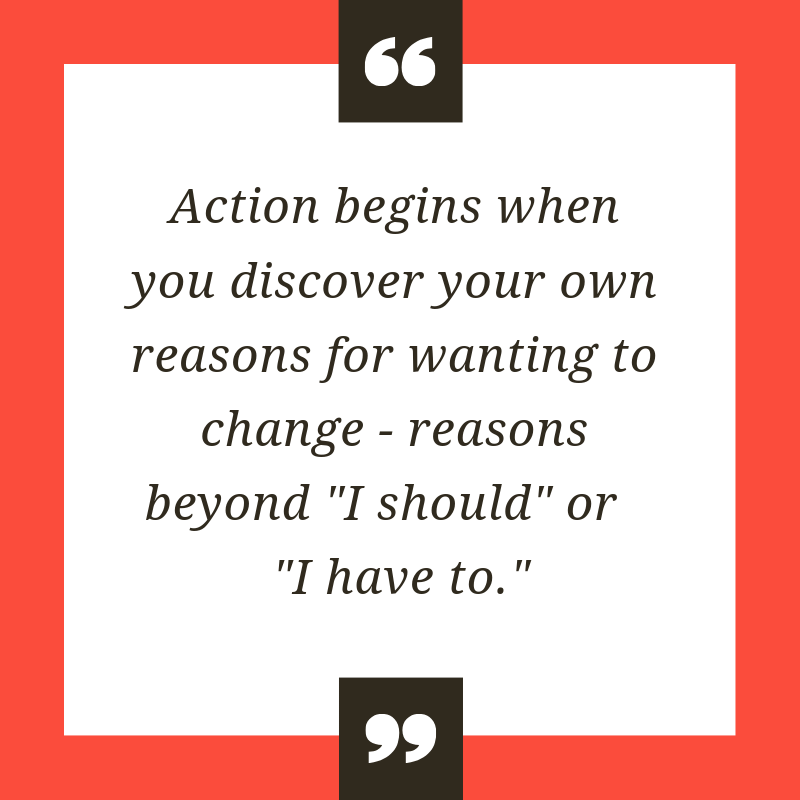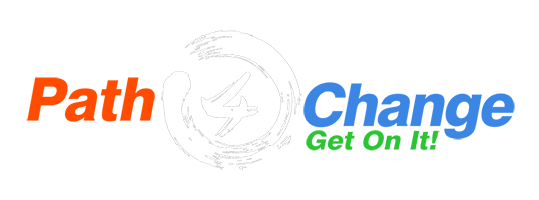By Dan Kimball
Change is HARD!
When it comes to behavior change it can be a struggle for some of us to even start, let alone stick with anything longer term.
Our main obstacle is our own ambivalence. Most of us know what to do to be healthier - what would improve our mood, energy, actions and so forth. We also know that making change takes time, energy, effort and motivation - and we know we might easily start down the wrong path if we don't know what we're doing.
Most of us tend to feel two ways about change - often both at the same time: "I want to" and "I don't want to" create a state of ambivalence - and that is as far as it goes.
This is where counseling or coaching can help you get unstuck. A counselor or coach can move you from just thinking about change to making a change. Action begins when you discover your own reasons for wanting to change - reasons beyond "I should" or "I have to."
When you find your "I want to," it is much easier to commit to taking action. This provides your motivation and direction on the path toward change.
Counseling highlights our ambivalence
Current research shows that most of us don't need more information about what to do or not to do. We need true, long term motivation. Motivation for change is a central issue for the success of any goal, and the same is true within a counseling or coaching session.
Often anxiety and ambivalence about change emerges as resistance to even starting. This resistance hinders the very actions you may need to take. As this is reflected in the counseling or coaching session, so it is in your life.

The Path4Change Approach
In the Path4Change I have developed an approach that helps clients address their ambivalence about embracing healthy lifestyle changes. The approach is based on a counseling style called motivational interviewing, and it guides individuals to recognize their own reasons for wanting to change, which strengthens their commitment to new behaviors.
The approach is simple. The Path4Change addresses the decisions you need to make about change as a conversation, not a directive. By first listening to what clients need and want with empathy and understanding, I help them become more aware of their own reasons, both for and against change.
Most people don't resist change out of ignorance. They don't need to be told what to do. Rather, they face genuine obstacles in their lives, and they often feel unsure what to do next. By helping you explore what you want in your life, and hearing more about the obstacles you face, I can help you address the obstacles and create a change plan you can implement. The secret to success is that you plug in to the motivation that can propel you past your own internal resistance.
It is amazing how long people can remain in a place of ambivalence. There is nothing surprising about this - it's simply human nature. With the Path4Change, you can get out of the Forest of Indecision and make the important changes that are calling you to act.
Exploration vs. Direction
Nobody likes to be told what to do. When your friends, family members, or others tell you what you should do, it often provokes defensiveness. Sometimes, though, a client does need new information to make a decision or solve a problem. If this occurs, I may ask if I can share information with you or provide you an alternative coping skill that may be useful. I will then follow up with an open-ended inquiry to see how this information fits with your values and beliefs, and you can evaluate the effectiveness.
The Path Forward
The final step of the Path4Change process is commitment and action. We will reflect on how your plan of action is moving forward based on your thoughts and feelings and YOUR reasons for change. The goal is always to foster your motivation and autonomy - not to promote my own idea of what you "should" do. This is your path - and the techniques and insights you pick up as part of the Path4Change experience are merely additional tools you can use as you move forward.

